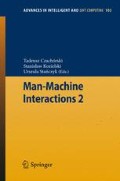Abstract
Modern graphical processing units (GPUs) offer much more computational power than modern CPUs, so it is natural that GPUs are often used for solving many computationally-intensive problems. One of the tasks of huge importance in bioinformatics is sequence alignment. We investigate its variant introduced a few years ago in which some additional requirement on the alignment is given. As a result we propose a parallel version of Center-Star algorithm computing the constrained multiple sequence alignment at the GPU. The obtained speedup over the serial CPU relative is in range [20, 200].
Access this chapter
Tax calculation will be finalised at checkout
Purchases are for personal use only
Preview
Unable to display preview. Download preview PDF.
References
Chin, F., Ho, N., Lam, T., Wong, P.: Efficient constrained multiple sequence alignment with performance guarantee. Journal of Bioinformatics and Computational Biology 3(1), 1–18 (2005)
Deorowicz, S., Obstój, J.: Constrained longest common subsequence computing algorithms in practice. Computing and Informatics 29(3), 427–445 (2010)
Gusfield, D.: Algorithms on Strings, Trees and Sequences: Computer Science and Computational Biology. Cambridge University Press, Cambridge (1997)
He, D., Arslan, A., Ling, A.: A fast algorithm for the constrained multiple sequence alignment problem. Acta Cybernetica 17(4), 701–717 (2006)
Khajeh-Saeed, A., Poole, S., Perot, J.: Acceleration of the Smith–Waterman algorithm using single and multiple graphics processors. Journal of Computational Physics 229, 4247–4258 (2010)
Kloetzli, J., Strege, B., Decker, J., Olano, M.: Parallel longest common subsequence using graphics hardware. In: Favre, J., Ma, K., Weiskopf, D. (eds.) Proceedings of the Eurographics Symposium on Parallel Graphics and Visualization. Eurographics Association (2008)
Ligocki, L., Rudnicki, W.: An efficient implementation of Smith Waterman algorithm on GPU using CUDA, for massively parallel scanning of sequence databases. In: Proceedings of the IEEE International Symposium on Parallel & Distributed Processing, pp. 1–8. IEEE Computer Society, Washington, USA (2009)
Liu, W., Schmidt, B., Voss, G., Müller-Wittig, W.: GPU-ClustalW: Using graphics hardware to accelerate multiple sequence alignment. In: Robert, Y., Parashar, M., Badrinath, R., Prasanna, V.K. (eds.) HiPC 2006. LNCS, vol. 4297, pp. 363–374. Springer, Heidelberg (2006)
Liu, W., Schmidt, B., Voss, G., Schroder, A., Müller-Wittig, W.: Bio-sequence database scanning on a GPU. In: Proceedings of the 20th International Parallel and Distributed Processing Symposium, pp. 274–281 (2006)
Lu, C., Huang, Y.: A memory-efficient algorithm for multiple sequence alignment with constraints. Bioinformatics 21(1), 20–30 (2004)
Manavski, S., Valle, G.: CUDA compatible GPU cards as efficient hardware accelerators for Smith–Waterman sequence alignment. BMC Bioinformatics 9 (suppl. 2), S10 (2008)
Munshi, A. (ed.): The OpenCL Specification. Khronos OpenCL Working Group (2010), http://www.khronos.org/registry/cl/specs/opencl-1.1.pdf
NVidia Corporation: NVidia CUDATM Programming Guide, version 2.1 (August 12, 2008), http://www.nvidia.com/object/cuda_get.html
Schatz, M., Trapnell, C., Delcher, A., Varshney, A.: High-throughput sequence alignment using graphics processing units. BMC Bioinformatics 8(474), 1–10 (2007)
Suchard, M., Rambaut, A.: Many-core algorithms for statistical phylogenetics. Bioinformatics 25, 1370–1376 (2009)
Tang, C., Lu, C., Chang, M.T., Tsai, Y.T., Sun, Y.J., Chao, K.M., Chang, J.M., Chiou, Y.H., Wu, C.M., Chang, H.T., Chou, W.I.: Constrained multiple sequence alignment tool development and its application to RNase family alignment. In: Proceedings of the 1st IEEE Computer Society Bioinformatics Conference, pp. 127–137. IEEE Computer Society, Washington, USA (2002)
Author information
Authors and Affiliations
Editor information
Editors and Affiliations
Rights and permissions
Copyright information
© 2011 Springer-Verlag Berlin Heidelberg
About this paper
Cite this paper
Gudyś, A., Deorowicz, S. (2011). A Parallel GPU-Designed Algorithm for the Constrained Multiple Sequence Alignment Problem. In: Czachórski, T., Kozielski, S., Stańczyk, U. (eds) Man-Machine Interactions 2. Advances in Intelligent and Soft Computing, vol 103. Springer, Berlin, Heidelberg. https://doi.org/10.1007/978-3-642-23169-8_39
Download citation
DOI: https://doi.org/10.1007/978-3-642-23169-8_39
Publisher Name: Springer, Berlin, Heidelberg
Print ISBN: 978-3-642-23168-1
Online ISBN: 978-3-642-23169-8
eBook Packages: EngineeringEngineering (R0)

